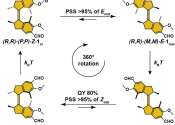The University of Groningen (Dutch: Rijksuniversiteit Groningen), located in the city of Groningen, was founded in 1614. It is one of the oldest universities in the Netherlands as well as one of its largest. Since its inception more than 200,000 students have graduated. It is a member of the distinguished Coimbra Group. In April 2013, according to the results of the International Student Barometer, the University of Groningen, for the third time in a row, has been voted the best University of the Netherlands. In 2014 the university celebrates its 400th anniversary with various activities in and around the city of Groningen.
- Address
- Groningen, Netherlands
- Website
- http://www.rug.nl/
- Wikipedia
- http://en.wikipedia.org/wiki/University_of_Groningen
Some content from Wikipedia,
licensed under CC BY-SA
Subscribe to rss feed









